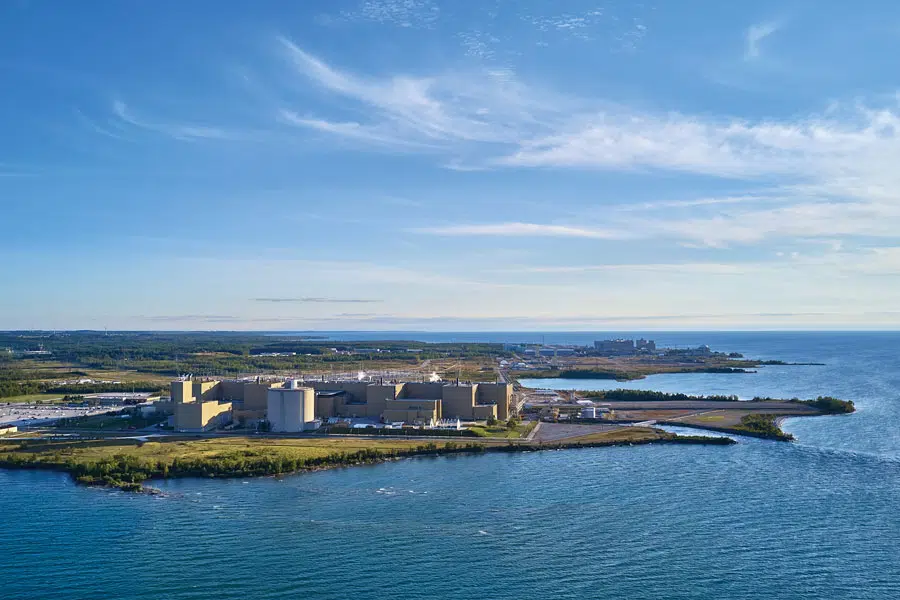Saugeen Ojibway Nation, Bruce Power and two provincial ministries are looking into the deaths of potentially millions of small fish after they were trapped in the nuclear power plant’s intake.
A statement from Saugeen Ojibway Nation (SON) March 21st, noted a large number of Gizzard Shad (a fish) had been trapped in the intake, and that there were also a number of dead waterfowl found at the Baie Du Dore site north of the plant. Their statement also noted the presence of numerous bald eagles in the area of the site (alive, not dead).
SON says, “This event raises concerns about the impacts of the artificial environment for aquatic life at the Bruce site.”
They say the Joint Chiefs and Councils are prioritizing the investigation. They note both SON chiefs, members of council and SON Environment Office staff met with federal agencies in Ottawa to discuss how Canada as a treaty partner will work with the First Nation to strengthen environmental protection.
Bruce Power says in a statement, “With the spring ice melt well underway, Bruce Power is aware of many deceased fish along the shoreline of Lake Huron.”
They note Gizzard Shad are a species that live along the shores of big lakes, bays, and larger rivers. Bruce Power says Gizzard Shad are “documented to be sensitive to prolonged cold in the natural lake environment and to changes in water temperature, which can result in a physiological cold shock response that has led to large population level die-offs in cold winters.”
Both SON and Bruce power note, Gizzard Shad are attracted to the warm water from Bruce Power’s thermal discharge.
The nuclear operator notes in its statement it had proactively removed Unit 2 from service in February due to a high volume of Gizzard Shad in the Bruce A intake channel.
They confirm SON’s statement that a large number were trapped and died.
The company says, “Bruce Power continues to investigate possible factors that could have contributed to this event, including Gizzard Shad sensitivities to cold lake temperatures.”
They note, “Gizzard Shad have been reported along the shoreline as far north as the Sauble River and as far south as Goderich, indicating this could be a population level event. Large numbers of Gizzard Shad have been observed in Lake Huron including around Bruce Power; this is likely due to their high rate of reproduction and warmer lake water temperatures in the last couple of years.”
Bruce Power added, it is also aware of the deceased waterfowl in Baie du Dore north of the Bruce Power site and say “We are working with wildlife authorities to determine the cause and ask the public to please avoid contact with any of the deceased wildlife to allow experts to investigate further. Waterfowl have been sent for lab testing to check for conditions including botulism or avian flu.”
When asked if this has happened before, Bruce Power Director of Community, Media Relations & Economic Development John Peevers noted, “A similar incident did occur in the winter of 1977 when a large number of gizzard shad made their way into the Bruce A intake channel and led to the shutdown of two units at Bruce A.”
Meanwhile, Bruce Power notes, the Ontario Ministry of the Environment, Conservation and Parks (MECP) and the Ontario Ministry of Natural Resources and Forestry (MNRF) are aware of this die-off and Bruce Power continues to engage with Indigenous Nations and local municipalities as well as regulators which include Fisheries and Oceans Canada and the Canadian Nuclear Safety Commission.”
Saugeen Ojibway Nation says its Environment Office will continue to monitor wildlife populations at the site and provide oversight and recommendations for mitigation strategies. The say Bruce Power has committed to sharing its information with SON. The First Nation says it intends to have discussions with Bruce Power on long-term solutions including intake protection improvements.









